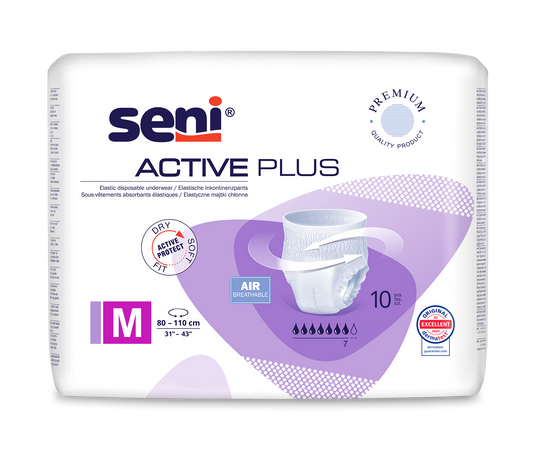
Help at the push of a button - with the help of emergency call systems safely through everyday life
In Germany, around 5.9 million people live in their household alone for over 65 years. This corresponds to about a third of this age group. This number has increased by around 17 % in the past 20 years. This also means that the security of this group of people should be guaranteed. Do you belong yourself Or do your relatives this group of people?
How many falls are there for seniors every year?
Around 4 million people in Germany plunge annually, with seniors particularly affected. About a third of the over 65-year-olds plunges at least once a year. These falls often lead to serious injuries, such as fractures and head injuries. Around 10,000 deaths per year are due to falls in Germany. Not always, falls or accidents can be avoided. However, there are measures that you as a person can take independently to reduce your personal risk of injury.
How many operations trigger emergency bracelets or home emergency call systems?
It is estimated that emergency call centers in Germany process around 1.5 million emergency calls annually. These missions include a variety of emergencies, from medical problems to domestic accidents. The exact number of missions varies, but home emergency call systems in Germany lead to several hundred thousand missions every year. Emergency arm straps also contribute to quick help, but specific numbers for operations that have been triggered directly by emergency bracelets are not always documented separately. However, they effectively complement the house emergency call systems, in particular with functions such as automatic falling and GPS location, which can also be used outside the house. There are various reports that highlight the benefits of emergency bracelets and home emergency call systems. These systems can significantly shorten the response time in an emergency and thus save lives. The exact number of missions varies, but home emergency call systems in Germany lead to several hundred thousand missions every year.

What are the cause in everyday life?
Personal factors
- Age and frailty: With increasing age, muscle strength and balance decreases, which increases the risk of falling.
- Health states: Chronic diseases such as arthritis, diabetes and heart problems, physical or mental disabilities can affect the balance and mobility.
- Taking medication: Certain medication, especially those that cause sleepiness or dizziness, can increase the risk of falling, so you always clarify possible impairments.
- Visual and hearing problems: Restricted visual and hearing and hearing can make it difficult to recognize dangers and obstacles.
Environmental factors
- Bad lighting: Dark or poorly illuminated areas increase the risk of stumbling.
- Stumbling: Loose carpets, cables or uneven floors are common causes of falls in the household.
- Wet or slippery soils: Especially in the bathroom and in the kitchen, moisture can significantly increase the risk of falling. But even outside the household it is important to be careful, think of weather-related slide and falling, such as snowfall or smoothness.
Situational factors
- Hurry and hustle and bustle: Fast movements or hurry can lead to falls, especially if you don't pay attention to the area.
- Unsuitable footwear: Shoes without a good hold or non -slip soles can affect the balance.
- Diversion: Multitasking or distractions during movement can negatively affect the attention of potential dangers. Make yourself consciously a mindful way of dealing with yourself and avoid driven by it.

What are the consequences?
Physical consequences
- Broken bones: Hip, wrist and thigh neck fractures are common injuries to falls, the risk increases with increasing age.
- Head injuries: Falls can lead to severe head injuries that often require lengthy treatment.
- Soft tissue injuries: Bruises, sprains and muscle injuries are also common.
- Long -term mobility restrictions: Serious injuries can result in long -term or permanent restrictions on mobility.
Psychological consequences
- Fear of further falls: After a fall, many affected people develop a fear of further falls, which can lead to avoidance behavior, consequently restricted mobility and social isolation.
- Loss of self -confidence: The ability to move safely is questioned what leads to a loss of self -confidence.
- depression: The combination of physical restrictions and social isolation can promote the development of depression.

How can I avoid falling?
Make the environment securely
- Elimination of stumbling blocks: Remove loose carpets, cables and other objects that could be in the way.
- Improve lighting: Ensure sufficient lighting in all rooms, especially in corridors and stairwells.
- Non -slip mat: Use non -slip mats in bathrooms and kitchens.
Use aids
- Handrails and handles: Install handrails on stairs and handles in the shower and next to the toilet.
- Stable walking stick or rollator: Use a walking stick or rollator if necessary to increase stability.
- Stairlifts: A stairlift can be a sensible investment for multi -storey houses.
Physical fitness
- Equilibrium training: Exercises to improve balance, such as special gymnastics, physiotherapy or rehabilitation, can help avoid falling.
- Strength training: Regular strengthening exercises, especially for the leg muscles, increase stability and stability.
- Movement in general: Daily movement and light sports such as cycling or swimming promote general mobility and coordination.
Medical provision
- Regular eye examinations: Good visibility is important to recognize obstacles in good time.
- Checking the medication: Some medication can cause dizziness or drowsiness. Have your medication checked regularly by the doctor, pay attention to side effects.
- Measure bone density: An investigation into osteoporosis can help to minimize the risk of broken bones in the event of falls.
Behavior in everyday life
- Move slowly and consciously: Avoid hasty movements and slowly get up to prevent dizziness.
- Safe footwear: Wear comfortable, non -slip shoes with a good fit and solid sole.
- Aids at hand: Keep important aids such as glasses, hearing aids or walking aids, always within reach.
Technological support
- Home emergency call systems: A home emergency call system can get quick help in an emergency.
- Emergency bracelet: These have important medical information and can automatically make an emergency call when falling.
- Motion detector: These can automatically switch on light in dark areas and thus reduce the trip risk.
Preventive measures
The above -mentioned measures for falling prophylaxis in the household are crucial to minimize the causes of falls and avoid the serious consequences. Regular exercise, adaptation of the living environment and medical provision can help considerably to reduce the risk of falls and to reduce its consequences.
Who are emergency call systems suitable for?
An emergency wristband is particularly suitable for:
- Older people: Especially those who live alone and have an increased risk of falls or other medical emergencies.
- People with chronic diseases: People with diabetes, epilepsy, heart disease or other serious health problems.
- People with physical or mental disabilities: This group of people is often restricted in mobility and/or cognition and therefore often cannot assess or predict dangers.
- Children: Especially children with special medical needs and special allergies
- Active people: People who are often alone (joggers, hikers) can quickly request help in an emergency.

What is the difference between a house emergency call and an emergency bracelet?
A house emergency call and an emergency bracelet are both valuable aids for safety and health, especially for people with special medical needs or older people. Nevertheless, they differ in their functioning and purpose:
House emergency call
Function and purpose:
- A home emergency call system is an electronic device that is usually installed at home. It consists of a base station and a portable transmitter that is worn as a bracelet or necklace.
- In an emergency, the sender of the transmitter can press a button to be connected to an emergency center immediately. This headquarters then organize the necessary help, be it a emergency services, a relative or a neighbor.
Advantages:
- Direct connection to an emergency center around the clock.
- Immediate help from trained staff.
- Suitable for older people or people with health problems who live alone.
Restrictions:
- Works mainly near the base station, usually only in and around your own home.
- Requires a monthly subscription service that causes costs.

Emergency bracelet
Function and purpose:
- A Emergency bracelet Contains important medical information about the carrier, such as allergies, chronic diseases, or emergency contacts. This information is visible on the bracelet.
- It enables first aiders and medical staff to quickly take the right measures in an emergency.
Advantages:
- The carrier is always identifiable everywhere, not just at home.
- No running costs after buying the bracelet.
- Useful for people with specific medical needs, athletes or for children and older people.
Restrictions:
- Does not offer a direct connection to an emergency call center.
-
Information is static and must be updated regularly when medical needs change.

While the house emergency call offers an active emergency call with direct communication and assistance, the emergency bracelet serves to passively provide important medical information in order to enable first -aid and medical staff to provide quick and efficient help. Both systems complement each other well and together offer comprehensive protection both at home and on the go. Remember that the prevention measures mentioned help help so that a fall can even be prevented. So be careful with yourself and like to pass these tips on to your relatives and acquaintances, because provision is always better than aftercare.
































